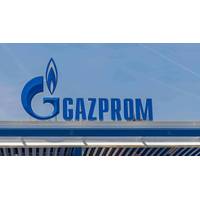Stricter EPA Rules Could boost Nuclear Sector
U.S. environmental regulators could throw a lifeline to the nation's ailing nuclear power fleet when they unveil landmark carbon pollution curbs next week, heeding calls from operators like Exelon Corp to acknowledge nuclear energy as a valuable way to reduce emissions.
The Environmental Protection Agency is due on Monday to release a plan to slash pollution from the power sector, the centerpiece of President Barack Obama's efforts to tackle climate change and likely one of the most contentious initiatives of his second term.
Nuclear generators like Chicago-based Exelon, the nation's largest, and Entergy Corp of New Orleans, have warned that they need a regulatory pathway to compete with cheap gas-fired power plants and to cope with the high cost of repairing or replacing aging units.
In meetings with the EPA, executives have urged the agency to recognize atomic energy in the new rules, arguing that financial incentives or trading systems that would prevent the closure of nuclear plants are an effective way to reduce overall greenhouse gas output.
Officials appear to have taken note. In an EPA summary document seen by Reuters, the agency identifies "avoiding the retirement of 8 percent of existing nuclear capacity" among several ways states can comply with the rules, along with increasing renewable power such as solar.
By naming the continued use of existing nuclear capacity as part of a "best system of emission reductions" - the menu of options for curbing carbon - the EPA could give states the go-ahead to make nuclear part of their strategy for complying with the new federal pollution limits.
It was not clear, though, whether this phrase would remain in the proposal, which is still being finalized. The EPA has declined to comment on any details of the plan until it is made public.
"We need every single megawatt of nuclear to stay in place just to tread water, and we need appropriate incentives to keep those units in operation and to expand clean energy," Joseph Dominguez, Exelon's senior vice president of governmental and regulatory affairs, told Reuters. He said he has not yet seen the EPA proposal.
NUCLEAR DISTRESS
The pleas arise amid growing signs of distress in the industry. Last week three nuclear units owned by Exelon, including two in Illinois, failed to win contracts at an auction to supply the Atlantic and Midwest PJM electrical grid, the nation's largest, for 2017-2018.
Exelon, which operates 24 reactors at 14 sites around the country, or about a quarter of the U.S. fleet, has said it may be forced to shut three Illinois units for economic reasons. The threatened facilities - in Byron, Clinton and the Quad Cities - employ more than 2,300 people and pay over $50 million a year in local and state taxes.
Nuclear plants produce nearly a fifth of the nation's energy, and industry boosters tout the reliable, around-the-clock, carbon-free output. Clean alternatives such as wind turbines operate only intermittently, and need additional capacity from gas or coal plants to maintain a steady supply for customers.
Chuck Barlow, Entergy's vice president of environmental strategy and policy, says nuclear generators should get credit for the megawatts produced, either through state clean energy programs or multi-state carbon markets, like the northeast's Regional Greenhouse Gas Initiative (RGGI).
The EPA is expected to give states the option to use cap-and-trade programs, such as the RGGI, to comply with future performance standards, Reuters reported on May 20.
"Nuclear does need to get beneficial treatment under the rule because of its importance to meeting any climate change goals," Barlow said.
Without any incentives, companies may be forced to shut several of the nation's older reactors, despite expectations they would find favor with the retirement of older coal plants, said Doug Vine, a senior energy fellow at the Center for Climate and Energy Solutions.
A report from the Energy Information Administration in April forecast that a total of 10,800 megawatts of U.S. nuclear generation, or around 10 percent of total capacity, would be shuttered by 2020.
Nuclear accounts for nearly half of Illinois' electricity generation, with carbon-intensive coal making up most of the remainder, making the future of the nuclear fleet a key question for the Midwestern state.
Illinois lawmakers are advancing a resolution urging the EPA to "secure the continued operations" of its nuclear plants as a compliance mechanism for any greenhouse gas rules.
Doug Scott, chairman of the Illinois Commerce Commission, hopes the EPA proposal will back states like Illinois that have a cleaner energy mix, led by nuclear, but including energy efficiency improvements, coal plant closures and renewables.
"There are ways we can take advantage of the clean energy sources we have, like nuclear. Hopefully we will have enough flexibility to mesh all of the things we are talking about," Scott said.
By Valerie Volcovici and Scott DiSavino






